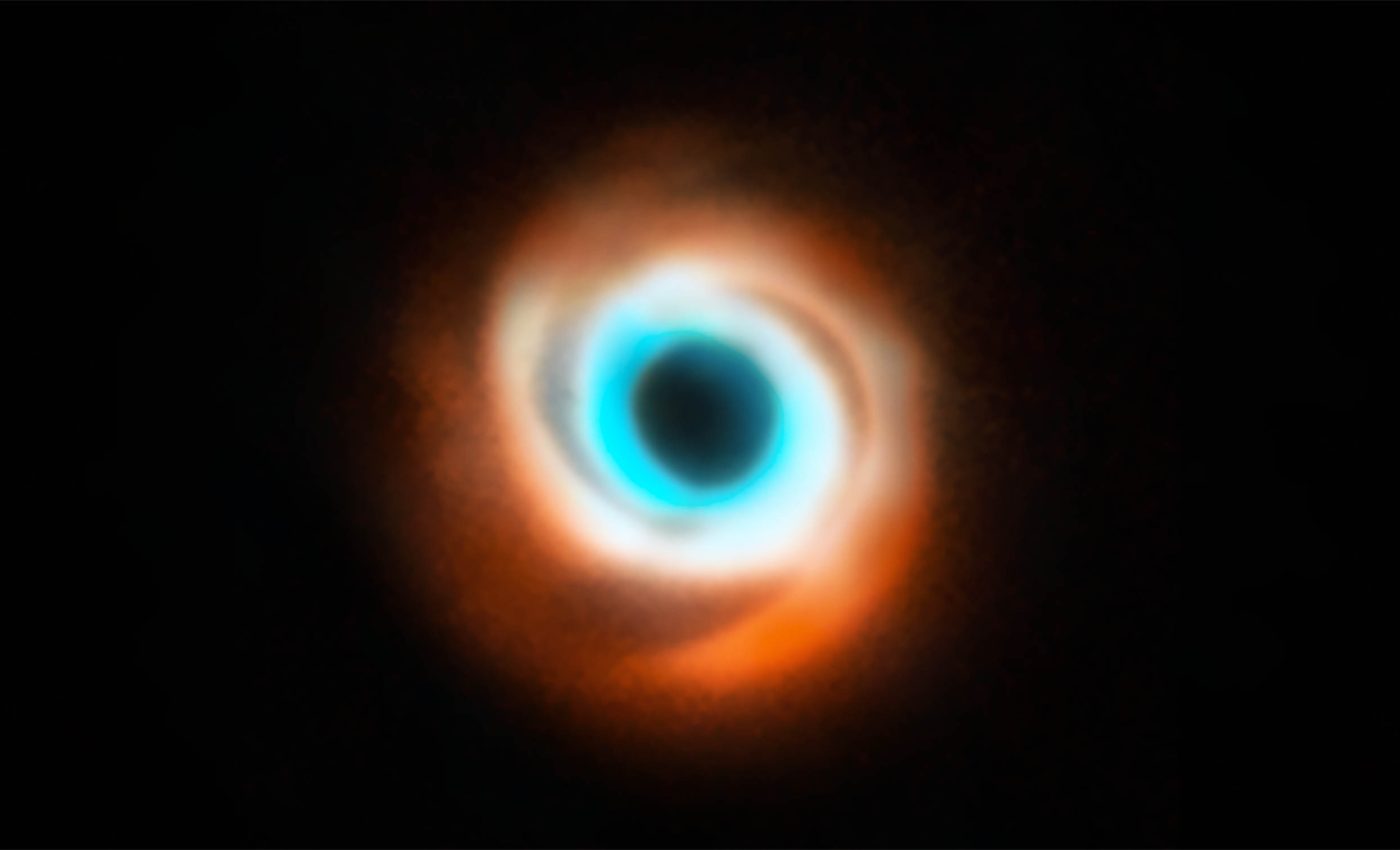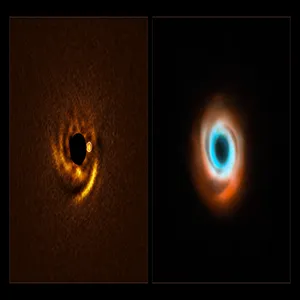
Astronomers capture video of a newborn planet sculpting its dust disk for the first time ever
A swirl of gas and dust orbits a young star named HD 135344B, 440 light-years away in the constellation Scorpius. Inside that haze, astronomers have spotted telltale spirals that most theories link to the tug of a growing world.
Now, fresh images from the European Southern Observatory’s Very Large Telescope (VLT) point to a compact object exactly where one of those spirals begins.
That bright signal, embedded deep in the disc, is likely a planet still gathering mass.
Many teams have chased such a sight, yet clear proof has stayed just out of reach. A planet is small and faint compared with the glare of its star, and the surrounding dust adds another curtain.
The new observations slice through that curtain with the sharpest infrared vision yet, revealing what looks like a cosmic sculptor caught in the act.
Watching HD 135344B feed
“We will never witness the formation of Earth, but here, around a young star 440 light-years away, we may be watching a planet come into existence in real time,” says Francesco Maio of the University of Florence, lead author of the study.
The team used ERIS, the VLT’s newest infrared imager and spectrograph, to zero in on the inner disc.
The suspected planet sits about as far from HD 135344B as Neptune does from the Sun – roughly 2.8 billion miles.
Models suggest it already holds twice the mass of Jupiter. At that heft, it can carve lanes in the surrounding gas, forcing material into striking spiral arms that wind outward across the disc.
Spiral clues from HD 135344B
Spirals first turned up in 2018 images captured by the earlier SPHERE instrument.
Theory predicted that a hidden planet would lurk at the base of one arm, shepherding dust the way a snowplow makes ridges on a road. ERIS has now revealed a pin-bright knot right on that spot.
“What makes this detection potentially a turning point is that, unlike many previous observations, we are able to directly detect the signal of the protoplanet, which is still highly embedded in the disc,” says Maio, now based at Italy’s Arcetri Astrophysical Observatory.
“This gives us a much higher level of confidence in the planet’s existence, as we’re observing the planet’s own light.”
HD 135344B vs. V960 Mon
The same instrument has also probed V960 Mon, a star that surprised astronomers in 2014 when it flared almost overnight. Such outbursts define a rare class called FU Orionis objects.
The sudden brightening happens when a heap of gas plummets onto the star, releasing energy like a campfire fed fresh wood.
Earlier snapshots from SPHERE and the Atacama Large Millimeter/submillimeter Array (ALMA) showed that V960 Mon’s disc is laced with multiple spirals and dense clumps – hallmarks of gravitational instability.
This process can cause parts of a disc to collapse under their own weight, potentially giving birth to brown dwarfs or gas-giant planets far from the central star.
Using an instrument called ERIS, a separate team led by Anuroop Dasgupta of ESO and Diego Portales University detected a warm, compact source tucked beside one of those spirals.
“That work revealed unstable material but left open the question of what happens next. With ERIS, we set out to find any compact, luminous fragments signaling the presence of a companion in the disc – and we did,” says Dasgupta.
The newcomer might be a forming planet or a brown dwarf, but whichever it is, the object offers a rare snapshot of collapse in progress.
Learning from HD 135344B
Planet formation usually follows the slower core-accretion route: dust grains stick together, build rocks, then grow into full-sized planets over millions of years.
Gravitational instability, by contrast, can whip up a gas giant in a few thousand years, especially in the chilly outskirts of a massive disc. The candidate around V960 Mon is prime evidence that instability sometimes wins the race.
The planet inside HD 135344B’s disc highlights a different stage. Here, the disc is stable enough that a single hefty planet sculpts spirals as it circles the star.
By catching the object while it still glows in infrared, astronomers can test how quickly such worlds capture gas and clear lanes.

Tools that sharpen the view
The ERIS instrument on the VLT combines adaptive optics with a sensitive detector that covers a wavelength range where warm dust shines brightest. It builds on the legacy of SPHERE, which excels at high-contrast imaging closer to visible light.
ALMA fills in longer wavelengths, mapping cold dust and molecular gas. Together, the trio can track both the scaffolding and the newborn objects inside.
Future upgrades promise even finer detail. The next-generation Extremely Large Telescope (ELT), set to open in the late 2020s, will have a main mirror 128 feet across, four times wider than any existing optical telescope.
Its first-light instruments should spot planets smaller than Saturn inside nearby discs and measure their mass through the tiny wobbles they induce in gas lanes.
Bright knots around young stars
Confirming the true nature of the bright knots around both stars will take time. Astronomers need to watch how the signals move.
A bound planet will trace a steady orbit; a transient dust clump will disperse. Follow-up spectra can also reveal whether the light comes from hot gas falling onto a solid core or simply from heated dust.
No single discovery rewrites the story of how worlds emerge, yet each new image adds weight to ideas once left to computer simulations.
By pairing sharper instruments with long-term monitoring, researchers are starting to catch planets in their messy, luminous infancy rather than piecing the tale together after the fact.
The full study was published in the Astrophysical Journal Letters.
—–
Like what you read? Subscribe to our newsletter for engaging articles, exclusive content, and the latest updates.
Check us out on EarthSnap, a free app brought to you by Eric Ralls and Earth.com.
—–













